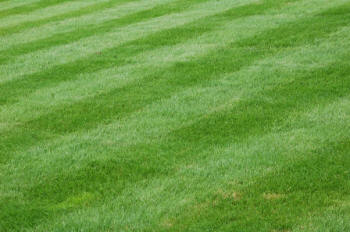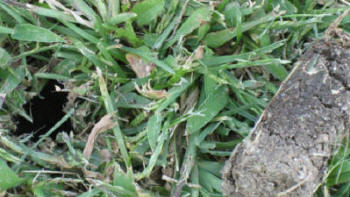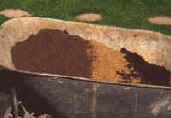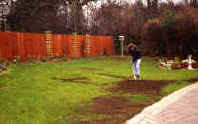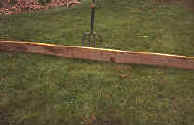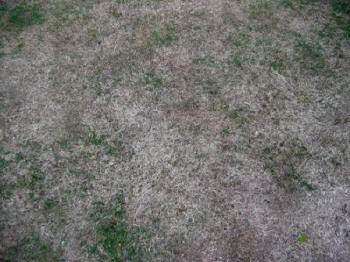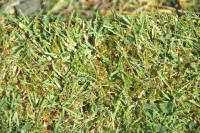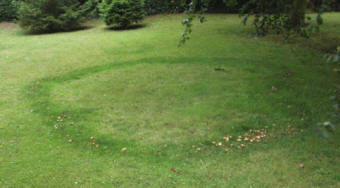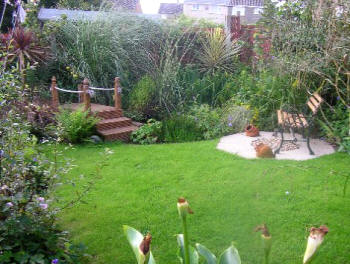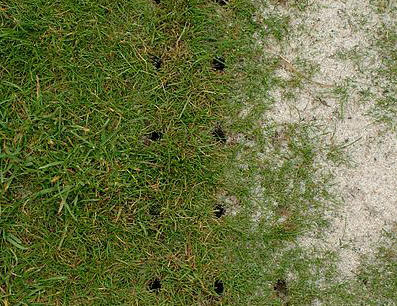There can be no mistaking Slime Mould on Lawns. Slime is exactly what it says! However, it does have some variants, and the term slime mould covers four or five different fungi that are sometimes found on lawns.
Fortunately slime is not a general problem on lawns. However, it will appear in damp places such as under the drip canopy of trees where the lawn is often permanently damp. You don't get dry slime! Slime can also appear on thinly populated grass areas which have been compacted.
It can either be green - as is most common - or even grey, pink or yellow in colour. Slime Mould itself does not do any harm to the soil since it is not a parasitic disease. It is the cause of slime which is the problem and should be dealt with.
Slime can be hosed off a lawn area. But the problem will still persist unless the underlying cause is dealt with..
It can also be brushed off in drier conditions.

